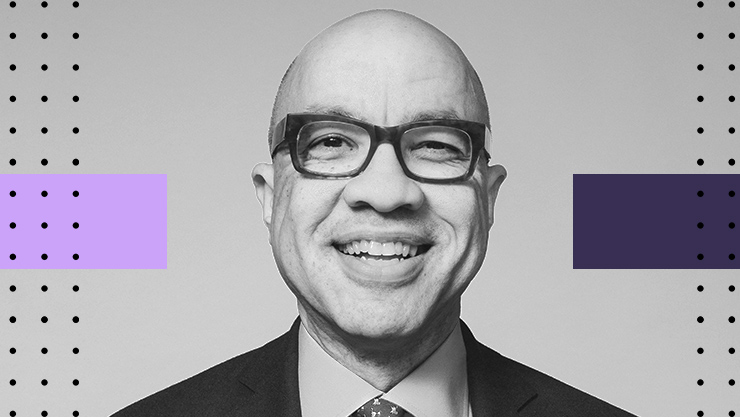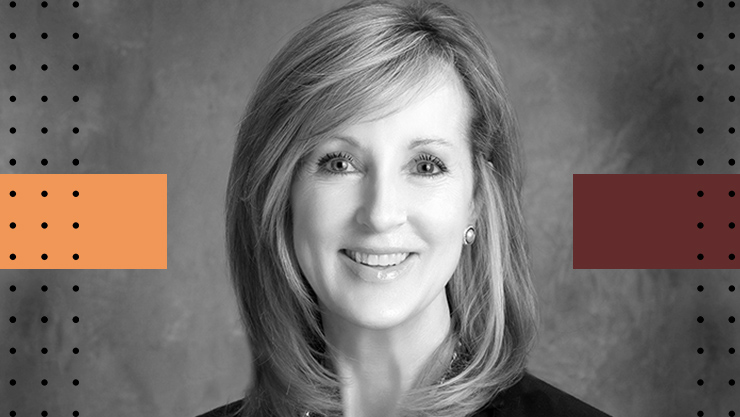
The Human Side of Infrastructure:
Lessons Learned from Conversations with Infrastructure Leaders
The Human Side of Infrastructure: Lessons Learned from Conversations with Infrastructure Leaders
There is nothing quite like learning by doing, but the second-best thing is learning from the people who have done it themselves.
Over the summer, as a part of the Future of Infrastructure podcast series, I have had the opportunity to sit down with leaders from across the globe who are taking action and getting infrastructure projects done. My conversations have taken me (physically and virtually) to NYC, San Francisco, Cleveland, Geneva and Perth.
I started this series to share the stories and the lessons learned with other infrastructure leaders and practitioners. Especially during this moment of infrastructure investment, we need to learn all we can so that we can build on the good and inspiring work that people are doing.
What have we’ve learned so far:
You Need a Champion (or “The Champ is Here”)
Every project needs a strong champion with the decision-making authority and personal investment to take a project through to completion. It comes through so clearly in all of these discussions that these leaders have been inspired and motivated by the positive impact and outcomes associated with the projects. That motivation helped get the projects off the ground and across the finish line. Infrastructure projects sometimes get the reputation for not being exciting, but the passionate leaders get them done.
Solve Real Problems
Successful infrastructure projects are aimed at solving real, tangible problems for people. People need to get to work and back home safely and connect with their communities. They need secure and reliable access to clean water and electricity. And they need their governments to be responsive. When infrastructure projects solve real problems, experienced by people in their day-to-day lives, they tend to build the kind of public support that helps them succeed. These projects aren’t easy. They tend to take a long time and are more expensive and complicated than they sometimes seem. Solving problems is a way to keep those projects on track.
Take a Whole Community Approach
Infrastructure cannot be only a top-down endeavor. As much as strong leadership helps get projects done, it is community involvement that makes sure those projects are solving the right problems for their community. This means listening and learning. It means spending resources towards the problems that will have the highest impact. This isn’t something that should just happen once at the beginning of a project. Make it an ongoing dialog with the community to ensure you’re staying on the right track.
Follow the Data
Figure out how to measure what matters and measure it consistently. Just as importantly, be willing to change course when the data suggests you should. I was also struck by how my guests shared stories of what they learned along the way. Things they didn’t expect, or didn’t focus on at first, but which became points of emphasis when the data showed they should be. This is particularly important for achieving equity goals. It isn’t always the obvious things that help you achieve more equitable outcomes. And you might miss something important if you haven’t followed the data – particularly when combined with listening to your community to point you in the right direction.
Outcomes Equal Impact
Infrastructure outcomes aren’t ultimately measured in completed projects. They’re measured in shorter commutes, healthier and safer environments, and more empowered people. In almost every discussion I’ve had on the Future of Infrastructure, we very quickly get into the outcomes and human impact. It reinforces that this work has high stakes and high payoff. After the infrastructure is in operation, continue to track the outcomes and let the information guide your long-term strategy.
And finally…
Don’t underestimate the power of the human story. All my guests have shared formative, personal stories about why they chose to get involved in professions that help the public. Their stories also capture another element of this work – why it’s important and why the impact is so great. Almost all of my guests have a story of how infrastructure affected them and how it has driven to do the work they do now.
It’s hard to capture all the lessons learned in a short post like this. It’s worth your time to go back and listen to all of our episodes to get all the details and hear it in the words of the people who actually got the job done, and let yourself be inspired by their stories.

Episode 24: Future of Infrastructure: Re-linking a Community
How can city leaders tackle the inequities of infrastructure built in the past? In this episode, Mayor Quinton Lucas joined guest host Jeremy Goldberg to talk about the legacy of U.S. Highway 71 in Kansas City, a divided community, and how he is using the U.S.’s Infrastructure Bill to build more equitable infrastructure.

Episode 25: Future of Infrastructure: Public Interest Technology: This is Our Work
In the 1960s, Public Interest Law emerged as a way for the legal profession to deploy its expertise in service of the public. Today, our guest Darren Walker, President of the Ford Foundation says that it's time for the same ethic and commitment to emerge from the field of technology. In this episode we discuss how to make that happen and what it will look like in practice when we create the structures for technologists to work in the public interest.

Episode 27: Future of Infrastructure: Be Obsessed with Delivering the Basics
Changing the face of Cleveland's lakefront has been a long-term project. Cleveland Mayor Justin Bibb joined Jeremy Goldberg in our latest Future of Infrastructure episode to talk about the importance of building trust and equity by investing in infrastructure like the lakefront and getting the basics right.

Episode 28: Future of Infrastructure: Changing Lanes: Equity in Transit
Seleta Reynolds, former GM of LADOT Los Angeles Department of Transportation (LADOT) joined Jeremy Goldberg to talk about the impact of our transit system on women and how we can build more effective and equitable transportation systems.

Episode 29: Future of Infrastructure: Focusing on Long-Term Outcomes
CEO of Infrastructure Western Australia Philip Helberg joined Jeremy Goldberg for our latest discussion on the Future of Infrastructure. Infrastructure has to serve people in the long term and this discussion is all about how to effectively make long term plans for infrastructure investment, and just as importantly, how to know if your plan is working.

Episode 31: Future of Infrastructure: Collaborating for Safer Roads
Regional Transportation Commission of Southern Nevada CEO, MJ Maynard joined Jeremy Goldberg to share how a collaboration between public agencies and technology companies helped make their roads safer.

Episode 32: Future of Infrastructure: Closing the Infrastructure Gap
Alice Charles brings a truly global perspective and decades of experience to our discussion of infrastructure and its impact. In this conversation, we talked about infrastructure needs around the world, and what kind of investments we need to make to close the gap.

Episode 33: Future of Infrastructure: Be Nimble to Succeed
Ratna Amin, Project Director for the City Administrator Office at the City of Oakland joined us to discuss how civic organizations are pushing governments to get transit infrastructure right – and the complexity of defining success.
About the Center of Expertise
Microsoft’s Public Sector Center of Expertise brings together thought leadership and research relating to digital transformation in the public sector. The Center of Expertise highlights the efforts and success stories of public servants around the globe, while fostering a community of decision makers with a variety of resources from podcasts and webinars to white papers and new research. Join us as we discover and share the learnings and achievements of public sector communities.
Questions or suggestions?










